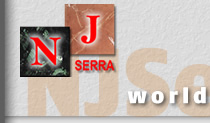The Stone Collection
Bellow we present a short introduction to the various types of stone we deal with. Clicking on the links will take you to our selection if quality natural stone.
Granite
Granite is an igneous rock of visible crystalline formation and texture. It is composed of feldspar and quartz with a small amount of mica. Granite is available in a wide variety of colours and textures with a speckled appearance caused by the darker crystals. Granite has greater strength that sandstone, limestone, and marble and is correspondingly more difficult to quarry. It is an important building stone, the best grades being extremely resistant to weathering.
Limestone
Limestone is a common sedimentary rock composed of primarily of the mineral calcite. Limestone can be formed in two different ways: with or without the aid of living organisms. Limestone is easily weathered and eroded. Limestone is an important building stone in many parts of the world. It is normally quarried from surface outcrops. Limestone is used as cut stone for building, and is common throughout Europe in cathedrals and palaces. Limestone is widely used for floors and walls both interior and exterior.
Marble
Marble consists primarily of calcite, dolomite or a combination of both minerals. Marble is capable of taking high polish and is used principally for statuary and for building purposes. Commercially the term marble is extended to include any rock composed of calcium carbonate that takes a polish, and it includes some limestone. Marble comes in a huge range of colours and textures with distinctive veining. Marble has been used for centuries in important buildings, cathedrals and palaces and now it is being used in modern buildings, shopping centres and airports.
Sandstone
Sandstone is a coarse-grained, sedimentary rock consisting of consolidated masses of sand deposited by moving water or by wind. The chemical constitution of sandstone is the same as that of sand and thus is composed essentially of quartz. The colour of the rock is often determined largely by the cementing material, iron oxides causing a red or reddish-brown sandstone, and the other materials producing white, yellowish, or graying sandstone. Besides serving as a natural reservoir for deposits of oil and gas, sandstone is used in building flagstone paving and in the manufacture of whetstones and grindstones.
Slate
Slate is a dense, fine-grained, fissile rock, formed by the metamorphism of shale or clay or igneous rock. True slate is hard and compact and does not undergo appreciable weathering. Slate is commonly bluish-black or gray-black in colour, but red, green, purple varieties are also known. Slate is quarried in usually in open pits and rarely in underground workings. Slate is used for floors, roofs, electrical panels, window and door sills, baseboards, stair treads, paving stones, laboratory table tops, kitchen work tops and sinks. Polished slate is used in some interior design.






